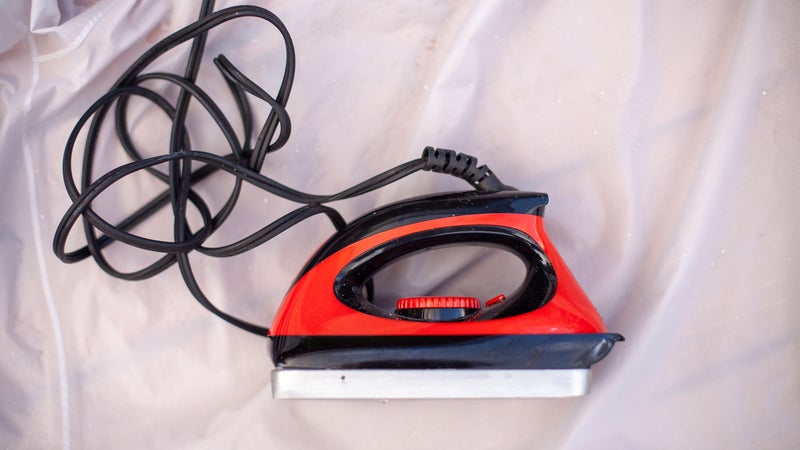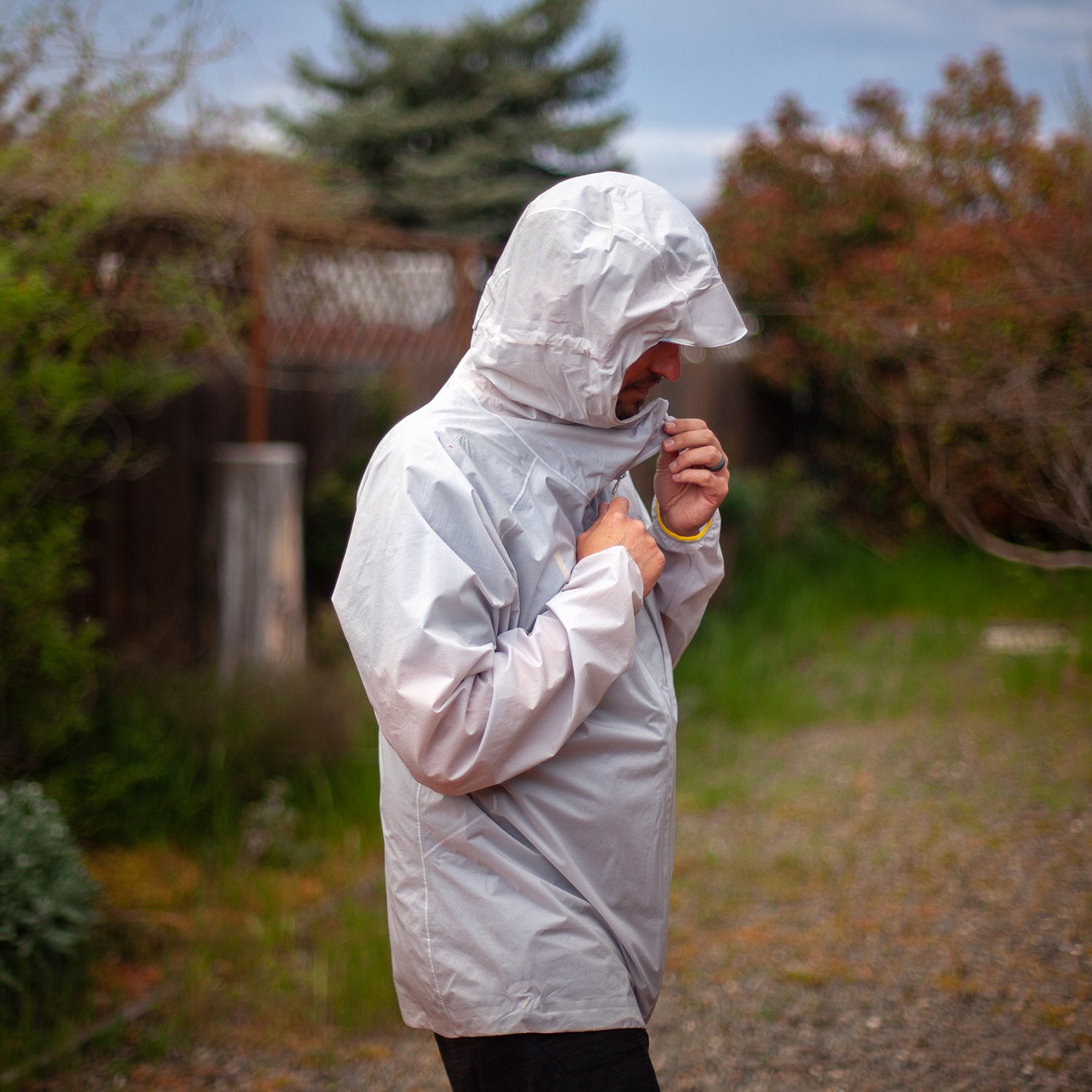I tend to get sentimental about my gear. I’ll hold on to a pack or a pair of skis for as long as I can, patching up minor damage to get as much life out of a piece of equipment as possible. But inevitably the point comes when it’s time to send a favorite jacket or running shoe to the great gear shed in the sky. Since it’s springtime—the season when a functioning rain shell is essential—I spoke with Clara Culp, who does repairs for the Gear Fix in Bend, Oregon. Culp’s been fixing outdoor equipment for five years, and she says that the shop gets about 30 customers each month who come in with rain shells or pants that need touching up. Here she breaks down four common jacket ailments, as well as how to determine if they can be fixed or it’s time to move on.
DWR Wearing Off
Why It Happens
“The waterproofing that coats the face fabric will deteriorate over time,” Culp explains. The most common causes are dirt buildup and improper laundering. “Regular detergent washes off a lot of the DWR,” she says.
How to Fix It
Culp suggests washing rain gear with purpose-made Nikwax TX.Direct Spray-On ($22) and TX.Direct Wash-In ($13) treatment. “That should be the only thing you use to wash it,” she says. Nikwax has revived quite a few of my ailing jackets over the years.
When to Toss It
“If a 30-year-old jacket is starting to feel grimy or waxy, it probably won’t absorb the treatment anymore,” Culp says. That griminess is a sticky feeling on the exterior, a tell-tale sign that the jacket is ready for the trash.
Busted Zipper

Why It Happens
It’s obvious when a zipper is broken—the pull snags or comes off completely. Culp says that the coils used on waterproof zips make them prone to failure, and when they fall apart they’re difficult to repair. The Gear Fix team replaces waterproof zippers with simple two-toothed YKK ones. They don’t keep out as much water, but “they’re way more durable,” she says. “Waterproof zippers are great if you’re going to be immersed in water, but they just don’t last.”
How to Fix It
First check with the manufacturer: a broken zipper can sometimes be repaired under warranty. If you're out of luck, and you have the skills, you can do it yourself with a sewing machine. “It’s definitely doable at home, but you’ll want to do some research first,” Culp says, since you need to replace the pull itself plus the teeth. Replacement zips are inexpensive and available at many outdoor shops or online. Important note: the needle will breach the waterproofing as you stitch. Seal up those holes with Gear Aid Silnet Silicone Seam Sealer ($8).
When to Toss It
If the fabric can handle it, you can replace the zipper as many times as needed. But when it becomes so riddled with stitching that it can’t accommodate any more, or if the jacket already lets in too much water, best to retire it.
Delaminating Layers

Why It Happens
Especially on older jackets, the inside lining can separate from the waterproof membrane. “The main reason is buildup of dirt, sweat, and body oil,” Culp says. To prevent that from happening, she suggests letting the jacket completely dry out before putting it away. Never store it wet—that will attract fungus and bacteria that can degrade the glue holding the layers together. “The material needs to breathe for it to maintain its function,” Culp says. Exposing the jacket to heat for a long time is another no-no. Membranes can peel apart if a jacket sits in the sun in your car, for example, which can melt the glue holding them together.
How to Fix It
“Waterproof-breathable repair tape can help keep a jacket from delaminating further,” Culp says. In my experience, Gear Aid’s Tenacious Tape ($5) gets the job done.
When to Toss It
While repair tape can do a lot for minor cases, it’s no silver bullet. “If the whole inside is peeling, tape is not going to do anything for you,” Culp says. “The jacket won’t protect you from water anymore, and there’s no way to relaminate it.”
Seam-Tape Failure

Why It Happens
Seam sealing is an amazing process used to waterproof the tiny stitch holes in a jacket. But like the jacket’s layers, it can come unglued if not properly cared for. “Heat makes the glue melt and the seams come apart,” Culp says.
How to Fix It
If you notice the seam tape starting to peal, nip it in the bud with some repair adhesive. (Tenacious Tape works well here, too.) In a pinch, carefully ironing problem spots can work by reheating the glue enough for it to be sticky again. But Culp advises against touching the iron directly to the jacket, as that can melt the fabric.
When to Toss It
If ironing doesn’t work and repair tape won’t stick, the jacket is toast.

